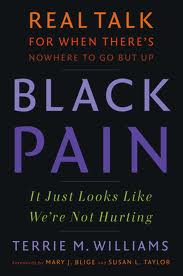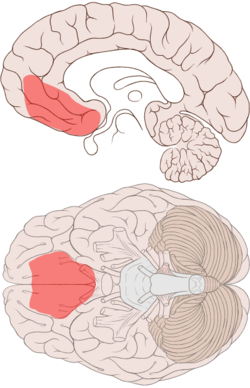The Problem

HOW THE HOW MOVEMENT GOT STARTED
The latest studies reveal that in 2011, over 37 percent of African American children are considered poor. Over the years, the poverty rate of black Americans continued to go down, but still, it remained to be the highest compared to other races. While the overall poverty in the country was around 15 percent in 2011, that of the blacks was at 27.5 percent. The data may be considered harsh or even biased by others, but one thing remains sure: poverty among the black communities is real.
This nonprofit is dedicated to all of the people who are suffering right now from abject poverty, lack and limitation and are feeling an overwhelming sense of shame and depression. As well as those children who are undiagnosed with Severe Depression or PTSD as a direct result of being born or forced into poverty due an event or series of events.
 I would like to publicly thank Terrie Williams for writing the book, Black Pain: It Only Looks Like We’re Not Hurting and allowing me to share an excerpt in the book on page 206. [Begin Expert] One of the problems with the disease of depression is that it makes you think you are the only one going through it, which kills your support system(s) and can subsequently kill you. I suffered from depression since I was a little child but didn’t know it. Unfortunately, like so many in the Black community, my family was in denial, and I wasn’t diagnosed until I was an adult. I was working as a journalist and happened to interview a psychiatrist who authored a book on depression. It was then I realized I had all the symptoms of mild to severe depression depending upon my environmental stressors. The positive side of my depression is that it’s the reason I went into the personal/spiritual growth industry—to truly find ways to feel better about myself by helping others. Now, as a minister, I am dedicated to helping adults and kids suffering from depression and the many ways it manifests in our lives. [End Excerpt]
I would like to publicly thank Terrie Williams for writing the book, Black Pain: It Only Looks Like We’re Not Hurting and allowing me to share an excerpt in the book on page 206. [Begin Expert] One of the problems with the disease of depression is that it makes you think you are the only one going through it, which kills your support system(s) and can subsequently kill you. I suffered from depression since I was a little child but didn’t know it. Unfortunately, like so many in the Black community, my family was in denial, and I wasn’t diagnosed until I was an adult. I was working as a journalist and happened to interview a psychiatrist who authored a book on depression. It was then I realized I had all the symptoms of mild to severe depression depending upon my environmental stressors. The positive side of my depression is that it’s the reason I went into the personal/spiritual growth industry—to truly find ways to feel better about myself by helping others. Now, as a minister, I am dedicated to helping adults and kids suffering from depression and the many ways it manifests in our lives. [End Excerpt]
It was during my pre-conversation with Terrie about her book that had an immediate impact on my life. She said, “Anyone born black into poverty is suffering from depression.”
Oh my God, this was like a wave that went throughout my body. When I realized that depression and in extreme cases, PTSD (Post Traumatic Stress Disorder) is not something that only happens to war veterans, it is happening right now to billions of people around the world who are suffering from generational poverty; especially those here in the US. This was my wakeup call to launch the HOW Movement dedicated to training the brains of our young people to ensure they reach their full potential in life.
According to NIMH (National Institute of Mental Health) ·
The symptoms of PTSD are…
PTSD can cause many symptoms. These symptoms can be grouped into three categories:
1. Re-experiencing symptoms:
- Flashbacks—reliving the trauma over and over, including physical symptoms like a racing heart or sweating
- Bad dreams
- Frightening thoughts.
- Re-experiencing symptoms may cause problems in a person’s everyday routine. They can start from the person’s own thoughts and feelings. Words, objects, or situations that are reminders of the event can also trigger re-experiencing.
2. Avoidance symptoms:
- Staying away from places, events, or objects that are reminders of the experience
- Feeling emotionally numb
- Feeling strong guilt, depression, or worry
- Losing interest in activities that were enjoyable in the past
- Having trouble remembering the dangerous event.
- Things that remind a person of the traumatic event can trigger avoidance symptoms. These symptoms may cause a person to change his or her personal routine. For example, after a bad car accident, a person who usually drives may avoid driving or riding in a car.
3. Hyperarousal symptoms:
- Being easily startled
- Feeling tense or “on edge”
- Having difficulty sleeping, and/or having angry outbursts.
- Hyperarousal symptoms are usually constant, instead of being triggered by things that remind one of the traumatic event. They can make the person feel stressed and angry. These symptoms may make it hard to do daily tasks, such as sleeping, eating, or concentrating.
It’s natural to have some of these symptoms after a dangerous event. Sometimes people have very serious symptoms that go away after a few weeks. This is called acute stress disorder, or ASD. When the symptoms last more than a few weeks and become an ongoing problem, they might be PTSD. Some people with PTSD don’t show any symptoms for weeks or months.
So, after my conversation with Terrie, I began to seek out and interview more Neuroscientists and Psychologists to see if there was a biological/psychological answer to generational poverty. I mean, we here all the time about hereditary and how certain genes and what not are passed on from generation to generation; why not poverty?
I spoke with Philosopher and Neuroscientist, Dr. Susan Blackmore who is one of the foremost experts on Memetics is conceived as a “unit of culture” (an idea, belief, pattern of behavior, etc.) which is “hosted” in one or more individual minds, and which can reproduce itself, thereby jumping from mind to mind. Memetics offered yet another way for the psychological lexicon of generational poverty to be passed on from one family member to the next, creating a community and subsequently a population of poor people not able to remove poverty or remove themselves from poverty.
 From there, I spoke with several more neuroscientists and psychologists and was then introduced to the Institute for Brain Potential where I was introduced to a part of the brain known as the vmPFC or Ventromedial Prefrontal Cortex. This is the part of the brain that regulates stress levels but when compromised or inundated with an overwhelming stress signal such as those suffering from PTSD stemming from financial struggle, lack and limitation and generational poverty, it begins to shut down and ceases being an effective stress management gatekeeper; causing those afflicted not to be able to make the most prudent decisions on their safety, their future, their family and their survival.
From there, I spoke with several more neuroscientists and psychologists and was then introduced to the Institute for Brain Potential where I was introduced to a part of the brain known as the vmPFC or Ventromedial Prefrontal Cortex. This is the part of the brain that regulates stress levels but when compromised or inundated with an overwhelming stress signal such as those suffering from PTSD stemming from financial struggle, lack and limitation and generational poverty, it begins to shut down and ceases being an effective stress management gatekeeper; causing those afflicted not to be able to make the most prudent decisions on their safety, their future, their family and their survival.
What is post-traumatic stress disorder, or PTSD?
PTSD is an anxiety disorder that some people get after seeing or living through a dangerous event.
When in danger, it’s natural to feel afraid. This fear triggers many split-second changes in the body to prepare to defend against the danger or to avoid it. This “fight-or-flight” response is a healthy reaction meant to protect a person from harm. But in PTSD, this reaction is changed or damaged. People who have PTSD may feel stressed or frightened even when they’re no longer in danger.
With that being said along with the new research that has made a connection between neurobiology, the brain and poverty, I officially declare…
A War on Generational Poverty!
You may call me the new “Anti Poverty Czar!”
Please read, THE SOLUTION.





